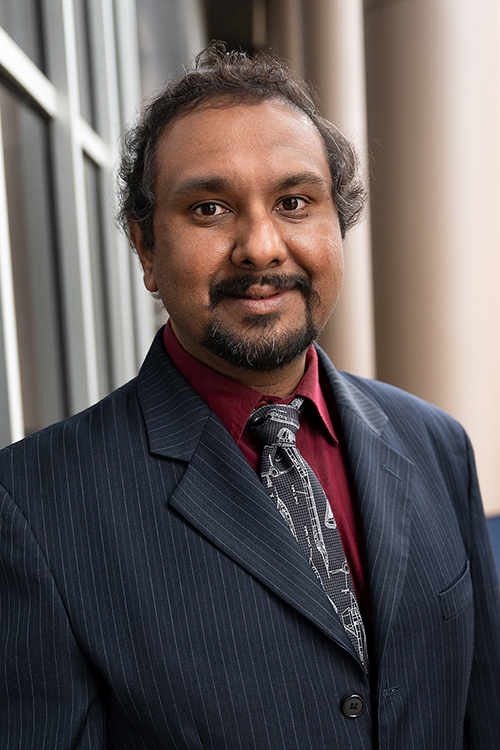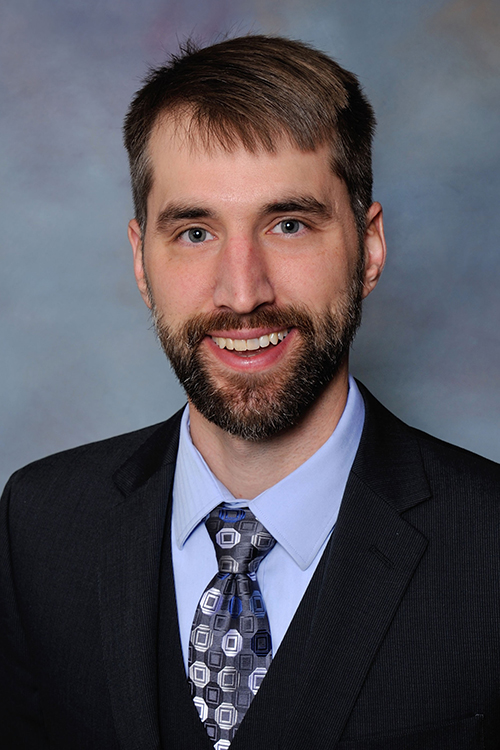UA engineering faculty secure NSF grant to study flow control using tunable flexible materials

Dr. Saikishan Suryanarayanan
Dr. Saikishan Suryanarayanan, assistant professor of mechanical engineering at The University of Akron, has received a new research grant from the National Science Foundation (NSF) for his project titled “Fundamental interaction mechanisms for separation control using tunable flexible materials.” He is joined by Dr. Nicholas Garafolo, associate professor of mechanical engineering, who will serve as co-principal investigator. The award, totaling $414,978, is funded by the Division of Chemical, Bioengineering, Environmental and Transport Systems (CBET) through the Fluid Dynamics program.

Dr. Nicholas Garafolo
“Congratulations to Dr. Suryanarayanan and Dr. Garafolo on securing this prestigious NSF award,” said Dr. Sergio Felicelli, chair of the Department of Mechanical Engineering. “Their innovative research exemplifies the strength and depth of our faculty and the cutting-edge programs we offer at The University of Akron. This funding not only advances important scientific knowledge but also reinforces our commitment to fostering student engagement and excellence in engineering research.”
Understanding flow separation and innovative control approaches
In fluid systems such as aircraft wings or turbine blades, flow may experience strong adverse pressure gradients that cause the airflow to detach or “separate” from the surface, forming a recirculation region. This flow separation reduces the lifting force on wings and leads to large fluctuations in pressure and flow speed, which can adversely impact system performance and stability.
Currently, small triangular protrusions known as vortex generators are commonly employed to mitigate flow separation. These devices create swirling flow regions that help re-energize the flow near the surface. However, new opportunities arise with the use of flexible materials, particularly those with tunable properties, which can provide enhanced flow control capabilities. Such materials offer the potential to improve safety and performance in aerospace and transportation applications—such as extending the operational envelope of aircraft and unmanned aerial vehicles in gusty conditions—while maintaining the cost-effectiveness and simplicity of traditional vortex generators.
This project aims to significantly advance the fundamental scientific understanding of the mechanisms by which these tunable flexible materials interact with turbulent flows to control separation. The research team will employ a combination of laboratory experiments and computer simulations to investigate these phenomena in detail.
Beyond the core research, the project will strengthen outreach programs through the development of new laboratory activities, increase undergraduate participation in hands-on research and foster the creation of a new graduate course focused on advanced flow control techniques.
About the principal investigators
Dr. Suryanarayanan joined The University of Akron in 2022. He holds a Ph.D. from the Jawaharlal Nehru Centre for Advanced Scientific Research in India, where he studied under the late Professor Roddam Narasimha, focusing on vortex methods and statistical mechanics in turbulent free shear layers. He earned his master’s degree from Texas A&M University and previously served as a research associate at the University of Texas at Austin, where he developed surface textures for mitigating roughness-induced transition in fluid flows. His current research centers on the control of transitional and turbulent boundary layers as well as vorticity dynamics, heat transfer and numerical methods. He is also a dedicated educator and mentor in the field of fluid mechanics.
As an entrepreneur, researcher, educator and commercially rated airplane pilot, Dr. Garafolo brings substantial applied research experience to the project. He has led an innovative, fast-paced aerospace startup organization from inception to first flight. His expertise spans the broad area of aerospace and thermofluids: UAS airships, electro-kinetic flows, droplet coalescence, micro-pumps, advanced aerospace seals, turbomachinery modal analysis, fluid visualization, air vehicle design and space flight hardware — making him a key collaborator in exploring the practical implications of this research.
Advancing knowledge and opportunities
The NSF award underscores the scientific merit and interdisciplinary potential of the project, which bridges fluid dynamics and materials science. The research outcomes are expected to contribute to the development of more efficient flow systems in aerospace and energy sectors while creating valuable research and learning opportunities for students.
RELATED CONTENT:
- Explore the Department of Mechanical Engineering
- Learn more about Research at the College of Engineering and Polymer Science
Media contact: Cristine Boyd, 330-972-6476 or cboyd@uakron.edu.
